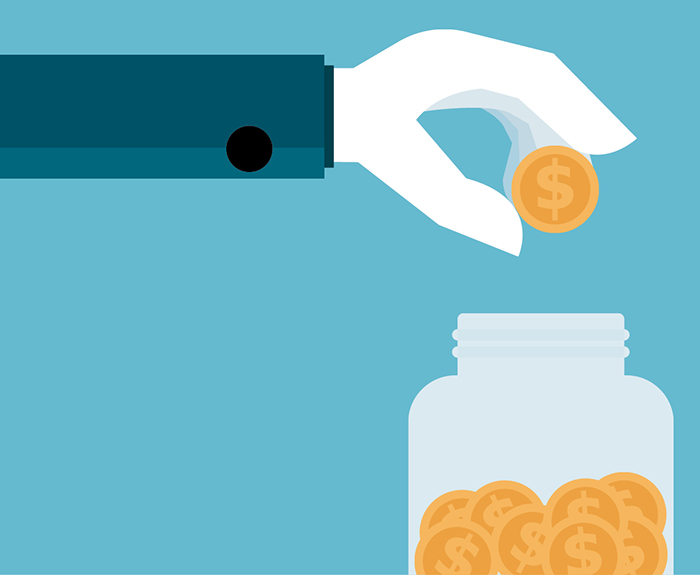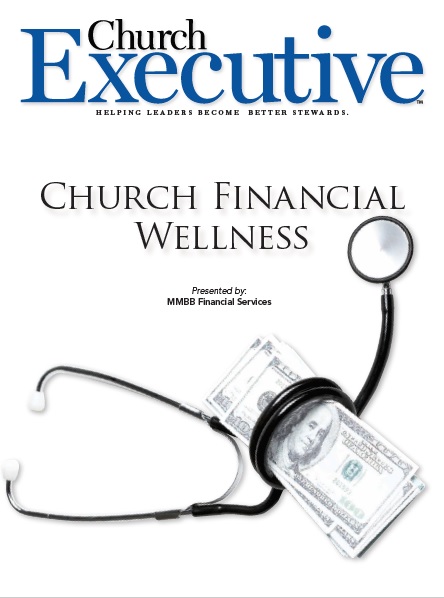
 Why young pastors should begin saving early — and how to do it
Why young pastors should begin saving early — and how to do it
By Colin E. Nass
If you’re a millennial, this might not surprise you: Contrary to popular belief, your generation is just as good as other generations — if not better — when it comes to managing money and getting your financial houses in order.
According to “Better Money Habits Millennials Report,” a 2018 study by Bank of America, millennials (currently ages 23-37) are more likely to set savings goals … and most meet them.
Still, you feel stressed about your finances; one in four of you often worry about money.
Why? Because if you’re a millennial, you entered the workforce during the most severe economic downturn since the Great Depression. You witnessed the economy suffering through difficult times, and you might have seen your parents and others lose a lot of money.
While you might be saving, one of your top financial worries is not having enough money saved. Obstacles to saving include not earning as much as your parents did, not always working for companies or organizations that offer employer retirement plans and having to repay thousands of dollars in student and seminary debt.
Yet, these are even more reasons to begin saving as early as possible.
So, how can you begin saving for retirement sooner? There are steps that can be taken immediately to prepare for the future — because it’s not just about saving for retirement. It’s about creating financial wellness.
 Limit debt
Limit debt
Ideally, millennials (and anyone else) should only have a credit card if they can afford to pay off the balance each month without interfering with their other bills.
Get started with a 403(b) plan, or IRA
If your employer offers a 403(b) plan, this is a great way to begin saving for retirement. You can contribute earnings towards your 403(b) plan and if your employer matches a percentage of the contribution, you should make sure you are contributing enough to get the full match. By matching a percentage of the contribution, the employer is essentially paying you a second time.
There are also tax benefits to contributing to a 403(b) plan. You don’t pay income tax on your contributions to the plan because they are either deducted or excluded from your income.
Also, the money in a 403(b) account grows through dividends, interest and investment appreciation, and you don’t pay taxes on those earnings or gains until you withdraw funds.
An IRA is similar, except that the employer does not make contributions. As the accountholder, you are essentially on your own and must have the discipline to make regular contributions to the account.
One type of IRA that might be the ideal retirement savings vehicle for you is the Roth IRA. This type of account provides great flexibility and tax advantages at a time in your life when your income might be unstable, you are heavily taxed, and your expenses are high from paying down debt.
A Roth IRA is funded with post-tax income, meaning you can’t deduct your contributions on your income taxes. However, all future withdrawals that follow Roth IRA regulations are tax-free. This a big benefit, since withdrawing money from other retirement accounts before the age of 59½ will incur a 10-percent tax penalty, along with income tax due on the withdrawal amount. A Roth IRA might be a good long-term retirement savings option if your income is not higher than the IRS limit and you anticipate being in a higher tax bracket later in your career.
If you are unsure about the type of retirement savings account that is best for you, seek advice from a certified financial planning professional.
Understand the power of compound interest

The earlier you begin a retirement plan, the better chance you have that your money will grow to a sufficient amount when it comes time to retire; this is because of the power of compounding interest.
Compounding interest simply means that when you invest, over time you not only earn interest on the money that you invested, but you also earn interest on your interest. For example, if you invested $1,000 a year at a guaranteed return of 4 percent, at the end of the year you would have earned $40 in interest and a total of $1,040. What happens next year? In year two, you earn interest not just on your original $1,000, but on the new balance of $1,040, so in year two you earn $41.60 in interest and have a new balance of $1,081.60. That extra $1.60 in the second year might not seem like much, but what if you kept that $1,000 invested for 25 years? Compound interest means that in 25 years, your original $1,000 would grow to $2,666 — more than double your original investment. The investment value would multiply significantly if you continue to save $1,000 each year.
The lesson of compounding is that time is your best friend when it comes to investing. Using the timeframe in the previous illustration, someone considering starting an investment of $1,000 might think, ‘I’ll just wait a year to start saving, it’s only $1,000.’ But the reality is, you are giving up 25 years of growth, or $1,666. It would be better to save a smaller amount and let time work for you than not save anything.
Keep cost-of-living increases in mind
Most of us will decide how much we need to save for retirement without taking into consideration that, as we grow older, products and services might become more expensive.
Cost-of-living expenses can increase, as well. For example, it is better to purchase a house while you are younger, so that you will not be paying off a mortgage loan in retirement.
Also keep in mind that the price of gas, electricity, water and other utilities or other costs of home ownership can increase in price over time.
Set reachable goals for your money, and be realistic
If you are earning $30,000 a year, putting $15,000 into a retirement account isn’t realistic. It would be impossible to afford expenses such as rent, gas, car insurance, student loans or other payments under that scenario.
However, it is possible to save and spend at the same time. The key is to save more than you spend.
Creating a plan and starting to save for retirement early means that you will not only be able to prudently spend money now, but the funds that are contributed to a retirement savings account are growing each year. When you add up all the factors mentioned — compounding interest, employer-matching funds and the tax benefits — it becomes evident that continuing to make contributions to a retirement account allows the funds to grow at a quicker rate.
Starting early and making continuous contributions to a retirement account throughout your working years will provide you with more options when the time comes for you to retire.
Colin E. Nass, CFP®, AEP®, RICP®, WMCPTM is senior manager of the financial planning and service center at MMBB. With more than 25 years of experience, he brings a broad range of financial planning and investment experience to MMBB.
Prior to joining MMBB, Nass worked for Lenox Advisors providing financial planning to the firm’s high-net-worth clients.
He holds a B.S. in optics from the University of Rochester and a Master of International Management degree from Baylor University in Texas. He earned his CFP® in 2005 and later earned the Retirement Income Certified Professional® and the Accredited Estate Planner® designations.


